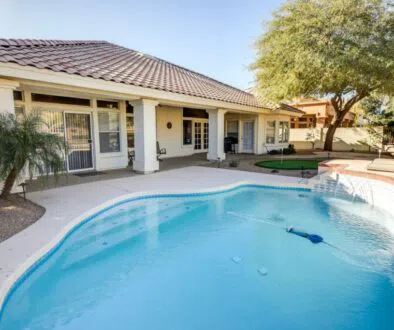High Chlorine In Pool: Tips To Fix Chlorine Level
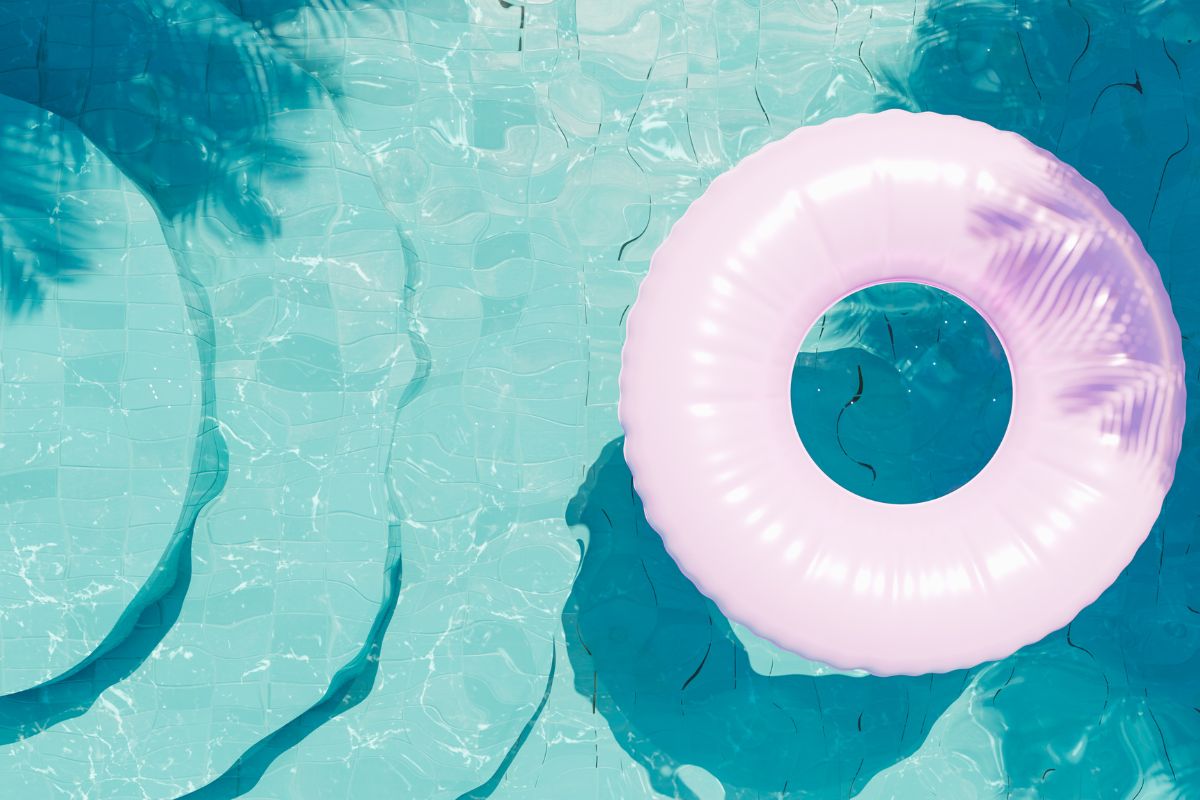
Published March 18, 2024
Swimming pools provide a tranquil escape, offering a space to relax, exercise, and enjoy the outdoors. However, below the shiny surface lies a fragile balance. This balance is vital for pleasure and safety. Chlorine is the primary defender against harmful microbes, maintaining the water’s purity. But what happens when this protector becomes a threat? What if the very substance meant to keep us safe becomes hazardous?
In this article, let’s explore pool chemistry. We’ll uncover the risks of high chlorine in pool levels, stirring both concern and fascination.
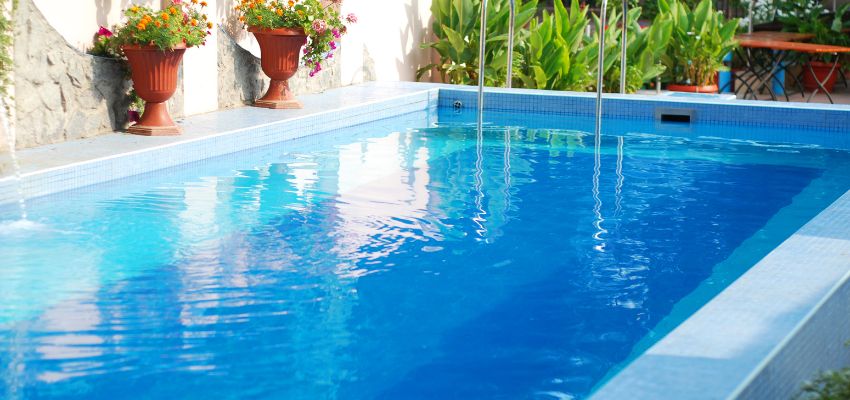
What Is The Ideal Pool Chlorine Level?
Maintaining the chlorine balance in a pool is crucial, ideally falling within the range of 1.0 to 3.0 parts per million (ppm). The maximum safe level is three ppm. A reading above five ppm is considered a hazard, requiring timely intervention.
This range guarantees clean and safe water for swimming, preventing any discomfort or harm to swimmers. Excessive chlorine levels above five ppm can lead to eye irritation and an unpleasant odor in the pool.
If you’re uncertain about the chlorine level in your pool, consulting a provider of Boca Raton pool services would be a practical move.
Dangers Of Too Much Chlorine In Pool Water
What happens if you swim in a pool with too much chlorine? Excess chlorine in pool water poses several risks. It can lead to skin, eye, and respiratory irritation in swimmers. Also, high chlorine in pool water can corrode pool equipment and degrade plastic parts over time.
- Eye and skin irritation. Over-chlorinated water can lead to irritation of the eyes and skin.
- Respiratory problems. High levels of chlorine can cause lung irritation and even trigger asthma.
- Allergies. Disinfection byproducts from excessive chlorine can cause allergies.
- Damage to Hair, Nails, and Skin: Over-chlorinated water can make hair, nails, and skin brittle.
- Damage to pool equipment. High chlorine levels can lower water’s pH, making it acidic. This can damage pool equipment, concrete, and metal piping.

Causes Of Excess Chlorine Levels In A Pool
High chlorine in pool water can stem from various causes.
- Excessive chlorine usage. Using large amounts of chlorine products, be it tablets, liquid, or granules, is a primary culprit.
- Inaccurate pool volume estimation. Underestimating the pool’s volume may lead to inadvertently over-chlorinating.
- Irregular water testing. Failing to test water regularly can result in chlorine levels escalating unnoticed.
- Insufficient sun exposure. Pools shielded from sunlight may retain high chlorine levels due to the lack of natural breakdown.
- Low pool activity. Pools with infrequent use or minimal swimmers can experience heightened chlorine levels.
- pH imbalance. Incorrect pH levels in a pool can hinder chlorine efficacy, potentially raising chlorine levels.
- Rebound circulation. Conversion of combined chlorine to free chlorine can cause sudden spikes in overall chlorine levels.
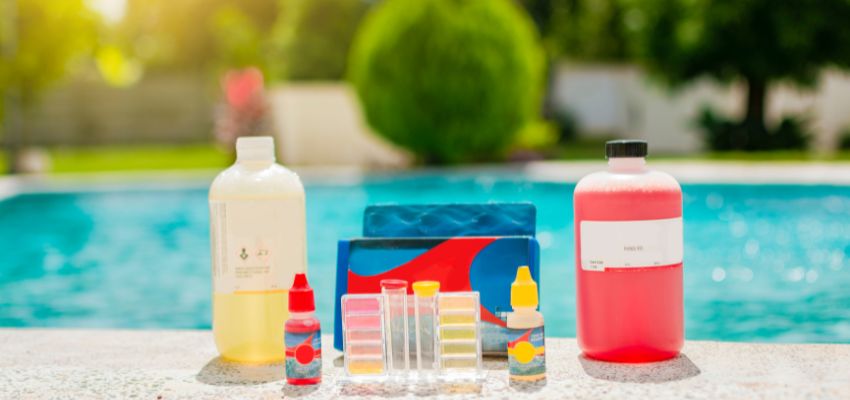
Testing The Chlorine Level In Your Pool
Regular pool water testing is essential to ensure the chlorine level is within the recommended range. You can use a pool testing kit, which typically includes reagents that change color based on the amount of chlorine in the water.
- Purchase a pool test kit. You need a test kit to measure the chlorine levels in your pool. These kits are available at most home improvement or pool supply stores.
- Collect a water sample. Use the vial provided in your test kit to collect a sample of your pool water. Collect the water about 12-18 inches below the pool’s surface.
- Add the testing reagent. Most kits include a reagent (a chemical that reacts with chlorine) that you add to the water sample. Follow the instructions on your test kit to know how many drops of reagent to add.
- Shake the vial. After adding the reagent, close the vial and shake it to mix the reagent with the water sample.
- Wait for the reaction. The reagent will cause the water in the vial to change color. The specific color will depend on the chlorine level in your pool.
- Compare the color. Your test kit should include a color chart. Compare the color of your water sample to the colors on the chart to determine the chlorine level in your pool.
- Interpret the results. Ideally, the chlorine level in your pool should be between 1.0 and 3.0 parts per million (ppm). If it’s too low, you’ll need to add more. If it’s too high, you must wait for it to decrease naturally or use a chlorine neutralizer.
- Record the results. Record your chlorine levels each time you test. This will help you pinpoint any trends or issues over time.
Ways To Lower High Chlorine Levels In A Pool
If the chlorine level in your pool is excessively high, here are some methods to lower it.
1. Stop Adding Chlorine
The most straightforward approach is to halt the addition of chlorine to the pool. You can do this by turning off the chlorine feeder and removing tablets from the skimmer. This action allows the current chlorine levels to dissipate naturally. In elevated chlorine levels, the problem will resolve itself over time as debris or dirt are present, and once pool usage resumes.
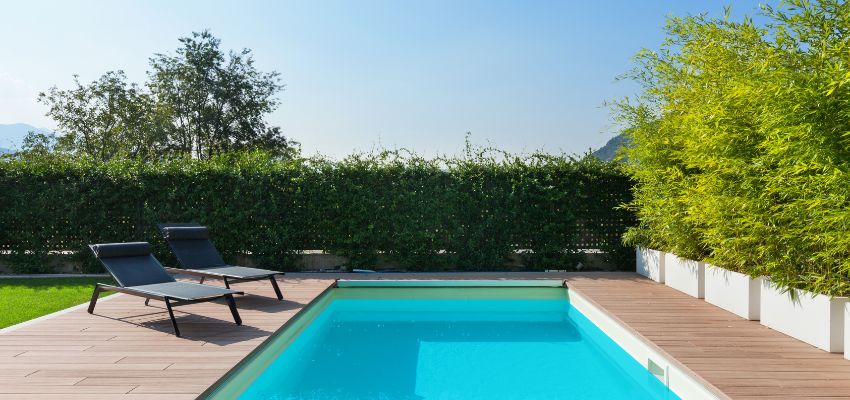
2. Expose The Water To Sunlight
Ultraviolet rays from the sun aid in breaking down chlorine. Therefore, uncovering your pool to let the water soak up sunlight can reduce chlorine levels. Leaving the pool exposed for 2-3 hours can significantly decrease the chlorine content. Remember to check the water often. Then, restart chlorination once levels drop.
3. Add Neutralizing Chemicals
Certain chemicals can neutralize excess chlorine. Sodium thiosulfate and sodium sulfite are standard options. Pre-packed chlorine neutralizers are also available. Regardless of the chosen method, it’s crucial to adhere closely to the instructions.
Adding 60 grams will decrease chlorine levels by one ppm in an average pool. Remember to add the neutralizer gradually for optimal results. Also, track the pH levels. Chlorine can impact the water’s pH balance, requiring the addition of pH adjusters.
4. Drain And Refill The Water
Draining and refilling your pool with fresh water can help lower high chlorine levels. However, this approach may impact pH, calcium hardness, and other chemical levels. If you choose this method, ensure that all levels are tested for optimal outcomes.
5. Choosing The Right Sanitizing System
Implementing a sanitizing system that automatically adjusts chlorine levels can prevent excessive chlorination. Systems with automatic control units ensure consistent chlorine doses and maintain the right chlorine and pH levels.
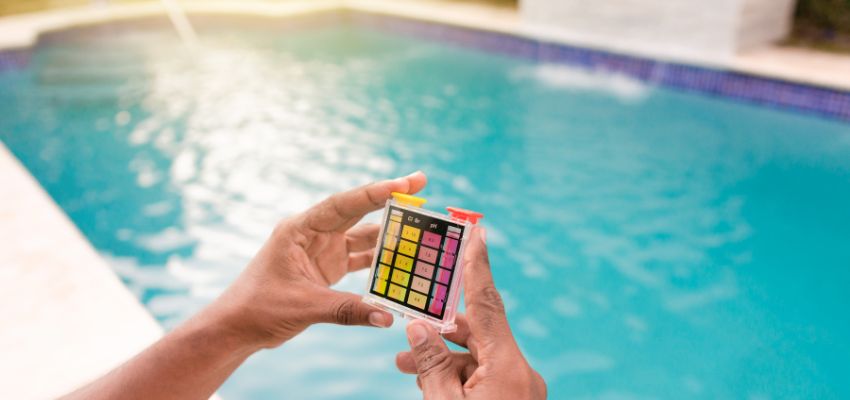
Take Control: Managing High Chlorine Levels In Your Pool
Maintaining the correct chlorine levels in your pool is crucial for a safe and enjoyable swimming experience. Consistent testing and precise addition of chemicals can prevent high chlorine in pool levels. If levels do rise excessively, there are several measures to restore the right balance. By upholding proper maintenance practices, you can ensure your pool remains clean, safe, and primed for endless summer fun. Take control of your pool’s chemistry today for a season brimming with refreshing swims and stress-free relaxation.
Hire Boca’s Favorite Pool Builders
Excel Pool and Patio Solutions is your trustworthy provider of pool services in Boca Raton. We are experts in pool and patio remodeling and can handle your resurfacing needs as well. Our technicians are vetted and trained for your guaranteed satisfaction. Get to know us by browsing our website or reaching out to us with any questions.
Contact our team today to request a free estimate for pool construction, maintenance, repairs and more.
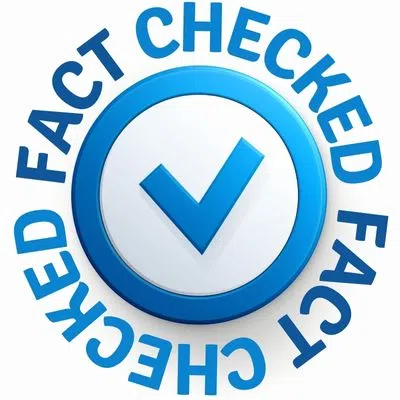
Fact Checked By Experts
This is original content and has been diligently fact checked by our internal team of experts. Discover more about the rigorous editorial standards we uphold for our website here.

About The Author
Hello! I am Corinne, a graduate of Riverside College. My career has evolved into focusing on writing, where I deliver high-quality and meticulously researched content. I have a proven track record of developing helpful articles that engage a wide variety of readers.


